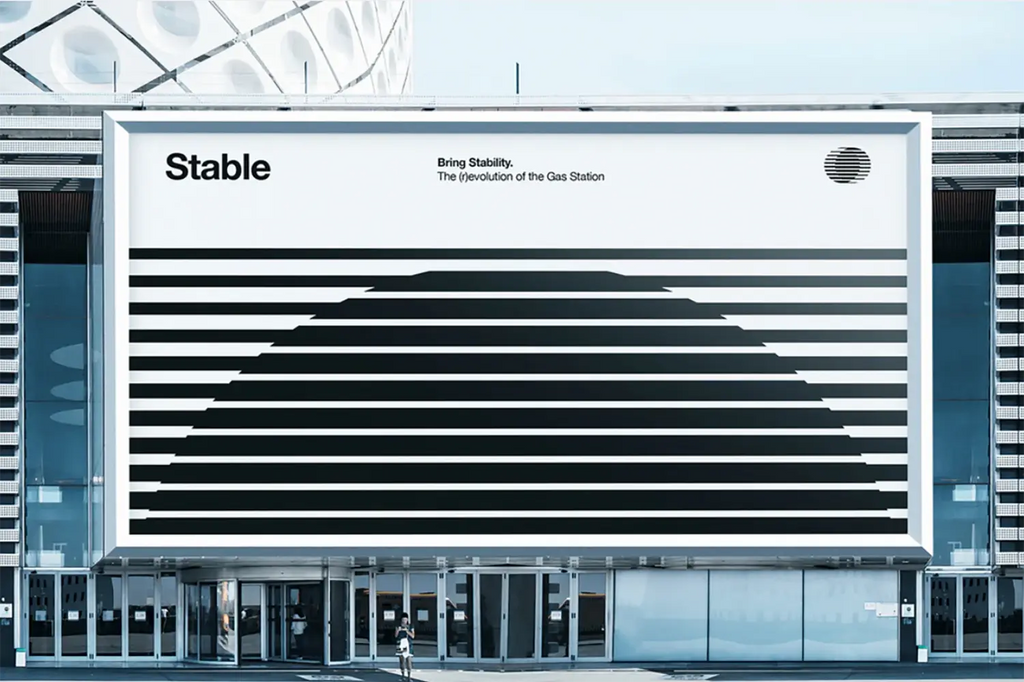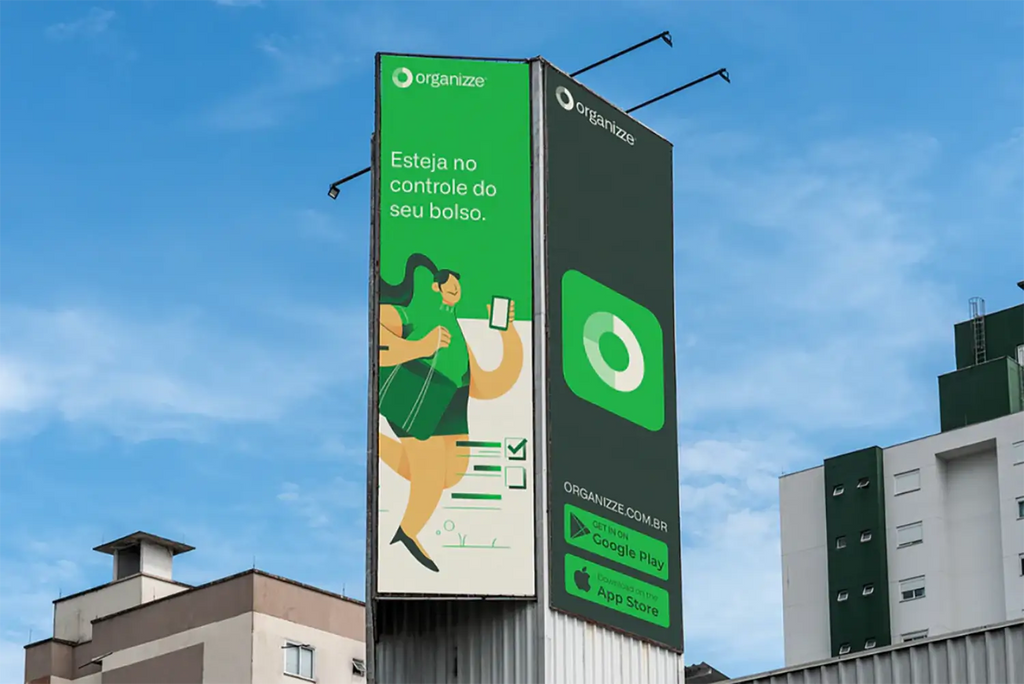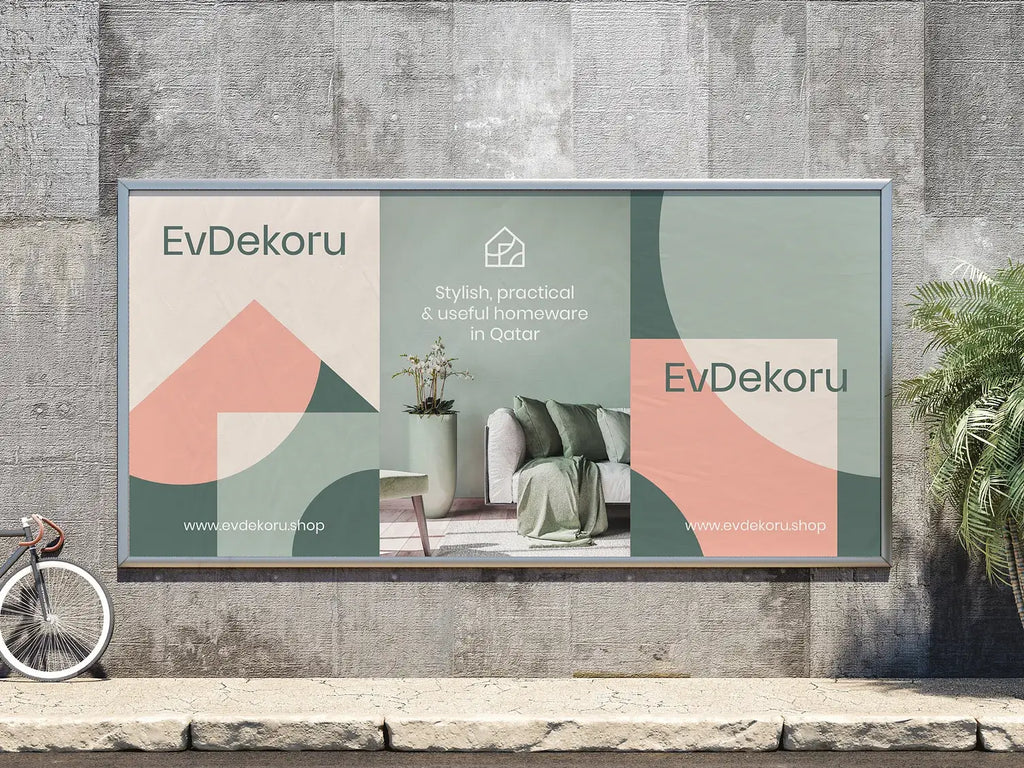How to Print Logo Designs for Billboard

Source: Ramotion, Stable Brand Identity, Behance, https://www.behance.net/gallery/113111611/Stable-Brand-Identity-Design
In the expansive world of advertising, billboards stand out as monumental platforms for branding and visibility. Successfully printing logo designs for billboards requires a blend of artistic design, technical understanding, and strategic planning. The visibility of a logo from varying distances and speeds, especially in high-traffic areas, makes the design and print process critically important. This guide will provide insights into the essential considerations and best practices for printing logo designs on billboards.
From selecting the right materials and inks to understanding the impact of environmental factors, every detail contributes to how effectively a logo communicates the brand’s message. Whether you're a seasoned designer or a business owner looking to make a big impression, mastering the art of billboard logo printing is key to ensuring your brand captures attention in the vast outdoor advertising landscape.
Understand Billboard Dimensions
When preparing to print logo designs for billboards, one of the first and most crucial steps is understanding the specific dimensions of the billboard space. Billboards vary widely in size, from large roadside billboards to smaller urban panels. Each type requires a different approach in terms of scale and design detail.
Start by acquiring the exact dimensions from the billboard provider. Common sizes include 14'x48' for standard highway billboards and 10'x40' for smaller urban locations. Knowing these dimensions is critical as it influences every aspect of the logo design, including the layout, imagery, and type size.
It’s essential to design with these dimensions in mind to ensure that all elements of the logo are visible and legible from the intended viewing distance. This might mean adjusting the size of the text or the logo itself to ensure it can be easily read from a distance. Remember, a design that looks good on a computer screen or a small print may not translate well to a large billboard.
Choose High-Resolution Images
Choosing high-resolution images is paramount in the process of printing logo designs for billboards. Given the massive size of billboards, every detail of the logo, including images and graphics, must be of the highest quality to prevent any pixelation or blurriness when viewed up close or from a distance.
High-resolution images should have a minimum of 300 dpi (dots per inch) when printed, although for larger billboards, even higher resolutions may be necessary. This ensures that the logo maintains its clarity and impact, without any loss in detail. It’s also important to use vector graphics wherever possible because they can scale to any size without losing quality, making them ideal for billboard printing.
When sourcing images, whether creating them from scratch or adapting existing ones, always keep the final output size in mind. What might appear crisp on a small screen could become distorted when expanded to billboard proportions. Testing the image by scaling it up on a larger screen or using software to simulate its appearance at full size can help identify any potential issues with resolution before going to print.
Opt for Vector Files
When printing logo designs for billboards, opting for vector files is crucial for maintaining the integrity and sharpness of the design, no matter the size. Vector graphics are created using points, lines, and curves based on mathematical equations, unlike raster images that consist of pixels which can blur when enlarged.
The primary advantage of using vector files in billboard printing lies in their scalability. Vector graphics can be scaled up to the size of a billboard without any loss of quality or clarity, making them ideal for large-format printing. This attribute is essential because billboards are designed to be viewed from various distances and must remain visually impactful.
Furthermore, vector files are often smaller in file size compared to high-resolution raster images, which makes them easier to handle and transfer to the printing companies without compromising on detail. Programs like Adobe Illustrator and CorelDRAW are typically used to create and manipulate vector artwork effectively.
Designers should ensure all components of the logo—including text, symbols, and other decorative elements—are converted to vector format. This ensures that every element of the design will remain crisp and clear when printed, regardless of the billboard's size.

Source: Guilherme Vissotto, Organizze, Behance, https://www.behance.net/gallery/170082105/Organizze
Consider the Viewing Distance
Considering the viewing distance is essential when designing logo prints for billboards. The effectiveness of a billboard largely depends on how easily the content can be read and recognized from a distance. Since billboards are typically viewed from a considerable distance, often by individuals moving at high speeds, every element of the design must be optimized for maximum readability and visual impact.
To ensure the logo is effective, designers must focus on size, color contrast, and simplicity. The logo and any accompanying text should be large enough to be easily discernable from the furthest point of viewer contact. This often means simplifying designs to include only the most essential elements to avoid clutter that can diminish visibility.
Color contrast also plays a critical role in visibility. High contrast colors help distinguish the logo from the billboard's background and the surrounding environment. For instance, a dark logo on a light background or vice versa can enhance readability and attract more attention.
Use Bold Colors
In the realm of billboard advertising, the use of bold colors is a strategic choice that can significantly enhance the visibility and impact of logo designs. Bold, vibrant colors grab attention from a distance, making them essential for billboards, which are often viewed quickly by passersby in moving vehicles.
When selecting colors for a billboard, consider how different hues will stand out against the backdrop of the sky, buildings, or foliage. High contrast color combinations, such as black on white or yellow on blue, can make your design pop and become more readable from afar. It's important to also consider color psychology and how certain colors can evoke specific emotions or convey particular messages that align with the brand identity.
Furthermore, the durability of colors under outdoor conditions is crucial. Opt for UV-resistant inks to ensure that your colors remain bright and clear over time, resisting fading due to sunlight exposure. This is vital for maintaining the effectiveness of your billboard over its lifespan.
Testing how colors appear in various lighting conditions, such as during the day and at night, can also provide insights into how your billboard will perform in real-world scenarios. This step ensures that no matter the time of day, the colors chosen will maintain their impact and effectively convey the logo’s message.
Limit Text Usage
When designing a logo for billboard advertising, it is crucial to limit text usage to enhance clarity and impact. Billboards are typically viewed for only a few seconds, often by people who are moving past at high speeds. Therefore, the message needs to be immediately clear and easy to comprehend at a glance.
To achieve this, focus primarily on the logo and use very limited text. If text is necessary, such as a tagline or web address, make sure it is concise and large enough to be read quickly. Avoid long sentences or complex messages that could distract from the main visual—the logo itself.
Simplicity in design not only aids in quick recognition but also helps in creating a strong and memorable impression. The text that is included should be direct and to the point, supporting the logo and the brand's message without overwhelming the viewer. Choose fonts that are bold and easy to read from a distance. Avoid script or overly decorative fonts that might become illegible when scaled up on a large billboard.
Additionally, ensure that there is a high contrast between the text and the background to improve legibility. Light text on a dark background or vice versa can significantly aid visibility from far distances.
Test Visibility
Testing visibility is a critical step when preparing to print logo designs for billboards. Since billboards are often viewed from varying distances and at different speeds, ensuring that the logo remains clear, readable, and visually striking in all conditions is essential.
Before finalizing the design, simulate how it will appear on a large scale. One way to do this is by printing a scaled-down version and viewing it from a distance to assess clarity. Another effective approach is displaying the design digitally on a screen at its intended dimensions to evaluate how well the logo stands out.
Lighting conditions also play a crucial role in visibility. A billboard will be exposed to different lighting scenarios, including direct sunlight, nighttime illumination, and shadows cast by nearby structures. Testing how the colors, contrast, and design elements perform in these conditions ensures that the logo remains effective at all times.
Additionally, consider how environmental factors like weather, fog, or glare may affect the visibility of the design. Using high-contrast colors and bold elements can improve legibility in less-than-ideal conditions.
A final test can involve driving past a mock-up or digital representation of the billboard at a similar speed to typical traffic flow. This allows designers to gauge how quickly the logo is recognizable and whether any elements need adjustments.

Source: Alex Spenser, EvDekoru Outdoor Advertising, Dribbble, https://dribbble.com/shots/14406391-EvDekoru-Outdoor-Advertising
Utilize High-Quality Inks
Utilizing high-quality inks is essential when printing logo designs for billboards, as outdoor advertisements are exposed to harsh environmental conditions that can affect their longevity and vibrancy. The right ink choice ensures that colors remain vivid and resistant to fading over time.
Billboards are subjected to direct sunlight, rain, wind, and temperature fluctuations, all of which can degrade print quality if inferior inks are used. UV-resistant inks are a must for billboards as they prevent color fading caused by prolonged sun exposure. Additionally, weatherproof inks help maintain print integrity even in extreme weather conditions.
When selecting inks, it’s important to consider their compatibility with the printing material. Whether the billboard is printed on vinyl, fabric, or another substrate, the ink should be formulated to adhere properly and maintain clarity without smudging or peeling.
Another factor to consider is the ink’s ability to provide consistent color reproduction. Poor-quality inks may result in inconsistencies, where some parts of the logo appear more saturated than others. This can negatively impact brand presentation and reduce the effectiveness of the billboard.
Lastly, eco-friendly ink options are becoming more widely available, offering a sustainable alternative without compromising on durability or quality. These inks minimize environmental impact while still providing the necessary longevity for billboard displays.
Choose the Right Material
Selecting the right material is essential when printing logo designs for billboards, as it directly impacts durability, print quality, and overall visual appeal. Since billboards are exposed to various environmental conditions, the material used must be able to withstand extreme weather while maintaining the integrity of the design.
Vinyl is one of the most commonly used materials for billboard printing due to its durability, flexibility, and resistance to moisture and UV rays. Vinyl banners provide a smooth surface for printing, allowing vibrant colors and sharp details to be displayed clearly. Additionally, mesh vinyl is an excellent choice for locations with high wind exposure, as it allows air to pass through, reducing strain on the structure.
Fabric billboards are another option, often used for backlit displays. They provide a softer, more refined look while still offering durability and weather resistance. However, fabric materials may require specialized inks and printing methods to achieve the best results.
Paper-based billboards, though less common, are used for temporary advertisements. These materials are cost-effective but lack the longevity and weather resistance of vinyl or fabric options.
When choosing a material, consider factors such as installation location, exposure to natural elements, and the expected lifespan of the billboard. The right choice ensures that the logo remains visible, crisp, and professional throughout the campaign.
Consult with Printing Professionals
Consulting with printing professionals is a crucial step in ensuring high-quality billboard prints that accurately represent logo designs. Experienced printers have the technical expertise to recommend the best printing methods, materials, and finishes to achieve optimal results.
A professional printing service can provide insights into the most suitable resolution and color settings to maintain clarity on large-scale billboards. They can also guide designers on file formats, ensuring that vector graphics and high-resolution images are used to prevent pixelation or blurriness in the final print.
Another key advantage of working with printing professionals is their knowledge of different printing techniques. For billboards, common methods include solvent printing, UV printing, and dye sublimation. Each technique has its strengths, depending on factors such as durability, color vibrancy, and environmental conditions.
Printing specialists can also advise on the best ink options for outdoor use. UV-resistant and weatherproof inks are essential for maintaining long-term color accuracy and preventing fading due to sun exposure.
Additionally, professionals can help designers account for installation requirements, including how seams, folds, or mounting hardware may affect the final appearance of the logo. This ensures that the billboard design remains seamless and visually appealing after installation.
Conclusion
Printing logo designs for billboards requires careful planning, the right materials, and professional execution to ensure maximum visibility and impact. From selecting high-resolution images and vector files to choosing durable materials and high-quality inks, every detail plays a role in the final outcome. Testing visibility, considering viewing distance, and consulting with printing professionals further enhance the effectiveness of billboard advertising. By following these best practices, businesses and designers can create striking, long-lasting billboard displays that capture attention and reinforce brand identity. A well-printed logo on a billboard ensures strong, memorable impressions that connect with audiences on a large scale.
Let Us Know What You Think!
Every information you read here are written and curated by Kreafolk's team, carefully pieced together with our creative community in mind. Did you enjoy our contents? Leave a comment below and share your thoughts. Cheers to more creative articles and inspirations!















Leave a Comment